
The Atari Lynx is a hybrid 8/16-bit fourth generation handheld game console released by Atari Corporation in September 1989 in North America and 1990 in Europe and Japan. It was the first handheld game console with a color liquid-crystal display. Powered by a 16 MHz 65C02 8-bit CPU and a custom 16-bit blitter, the Lynx was more advanced than Nintendo's monochrome Game Boy, released two months earlier. It also competed with Sega's Game Gear and NEC's TurboExpress, released the following year.

Indiana Jones and the Last Crusade: The Graphic Adventure is a graphic adventure game, released in 1989, published by Lucasfilm Games. It was the third game to use the SCUMM engine.
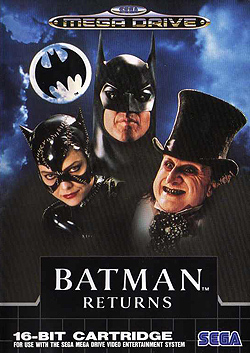
Batman Returns is a 1992 beat 'em up video game for various platforms based on the film of the same name. The Sega console versions were published by Sega while the NES and Super NES versions were developed and published by Konami. The MS-DOS and Amiga versions were also published by Konami, but were developed by Spirit of Discovery and Denton Designs respectively. An Atari ST version by Konami was also advertised, but never released. There is also an Atari Lynx version, published by Atari Corporation.

Paperboy is an arcade action game developed and published by Atari Games and Midway Games, and released in 1985. The player takes the role of a paperboy who delivers a fictional newspaper called The Daily Sun along a suburban street on his bicycle. The arcade version of the game featured bike handlebars as the controller.
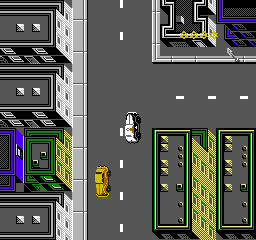
Dick Tracy appeared in a number of video games released as tie-ins for the motion picture:
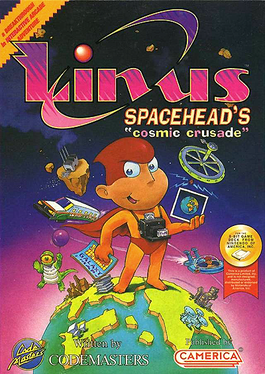
Linus Spacehead's Cosmic Crusade is a video game released in 1992 by Codemasters for the Nintendo Entertainment System. A remake of the game, retitled Cosmic Spacehead, was released in 1993 for Amiga, MS-DOS, Game Gear, Master System, and Genesis. The game features adventure elements, with locations connected by platform sections.

Xenon 2: Megablast is a 1989 shoot 'em up video game developed by The Bitmap Brothers and published by Image Works for the Amiga and Atari ST. It was later converted to the Master System, Mega Drive, Commodore CDTV, Game Boy, Acorn Archimedes and Atari Jaguar platforms. The game is a sequel to Xenon and takes place a millennium after the previous title. The goal of the game is to destroy a series of bombs planted throughout history by the Xenites, the vengeful antagonists of the first game.
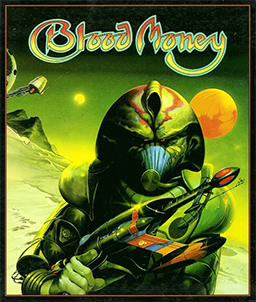
Blood Money is a side-scrolling shooter video game developed by DMA Design and published by Psygnosis in 1989 for the Amiga, Atari ST, and MS-DOS. A Commodore 64 version followed in 1990. The game is set in four different locations on a planet, where the player must fight off enemies and bosses.
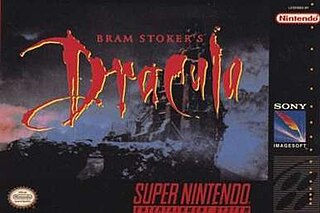
Bram Stoker's Dracula is a 1993 video game released for the Mega Drive/Genesis, Nintendo Entertainment System, Super NES, Game Boy, Master System, Sega CD, Game Gear, MS-DOS and Amiga games consoles. Based on the 1992 movie of the same name which in turn is based on the 1897 novel by Bram Stoker, each version of the game was an action-platformer except the Sega CD and Amiga versions which were beat 'em ups, and the DOS version which was a first-person shooter. The Amiga version was released in 1994 for North America and Europe. A CD-ROM version for DOS was released in 1995.

Double Dragon is a 1987 beat 'em up video game developed by Technōs Japan and distributed by Taito for arcades across Asia, North America and Europe. It is the first title in the Double Dragon franchise. The game's development was led by Yoshihisa Kishimoto, and it is a spiritual and technological successor to Technos' earlier beat 'em up, Nekketsu Kōha Kunio-kun (1986), released outside of Japan by Taito as Renegade; Kishimoto originally envisioned it as a direct sequel and part of the Kunio-kun series, before making it a new game with a different cast and setting.

There have been several video games based on the 1991 film Hook. A side-scrolling platform game for the Nintendo Entertainment System (NES) and Game Boy was released in the United States in February 1992. Subsequent side-scrolling platform games were released for the Commodore 64 and the Super Nintendo Entertainment System (SNES), and an arcade beat ‘em up by Irem later in 1992, followed by versions for the Sega CD, Sega Genesis, and Sega's handheld Game Gear console in 1993.

Techno Cop is a 1988 action video game for the Amiga, Amstrad CPC, Apple II, Atari ST, Commodore 64, DOS and ZX Spectrum. It was subsequently ported to the Sega Genesis in 1990. The gameplay combines pseudo-3D driving in the graphical style of Out Run with side-scrolling action as the player controls a police officer driving to and then moving through various seedy locations in a one-man war against crime. The game was the first game on the Genesis to have a warning label due to its violent content.

Lethal Weapon is a video game based on the film series of the same name created by Shane Black. It was developed by Ocean Software and Eurocom and released in 1992 and 1993 by Ocean and Nintendo. It was released in conjunction with Lethal Weapon 3, the third installment of the series.

RoboCop 3 is a video game based on the 1993 film of the same name. Amiga, Atari ST and DOS versions were developed by Digital Image Design beginning in September 1990, and published by Ocean Software in December 1991. The Digital Image Design version includes multiple gameplay styles. During 1992 and 1993, other versions consisting of side-scrolling platform gameplay were released for the Commodore 64, ZX Spectrum, NES, Super NES, Game Gear, Master System, and Sega Genesis.

Indiana Jones and the Last Crusade: The Action Game was published in 1989 by Lucasfilm Games, based on the film of the same name. The game was released for the ZX Spectrum, Amstrad CPC, Commodore 64, Atari ST, Amiga, IBM PC, MSX, Master System, NES, Game Boy, Sega Genesis and Game Gear.

Indiana Jones' Greatest Adventures is a 1994 platform video game released for the Super Nintendo Entertainment System. It is a video game adaptation of the Indiana Jones filmsRaiders of the Lost Ark (1981), Indiana Jones and the Temple of Doom (1984), and Indiana Jones and the Last Crusade (1989). The game was developed by Factor 5 and published by JVC Musical Industries. The story is told through cutscenes and text and is mostly faithful to the movies. Its release coincided with that of Super Star Wars: Return of the Jedi, also released by JVC and LucasArts and in the same platform style as the Super Star Wars trilogy.
Tiertex Design Studios Limited was a British software development company and former video game developer based in Macclesfield, England; it was founded in 1986, focusing on porting games to home computers and handheld platforms.















